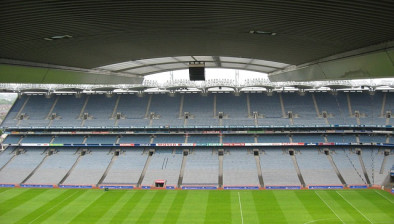High Court: Leave to appeal rejected in controversial planning case for 245 high-rise apartments in Finglas

Killian Flood BL
The High Court has refused an application to grant An Bord Pleanála leave to appeal a decision to overturn a planning permission for high-rise accommodation in Finglas. The controversial development permission had previously been quashed in July 2020 by Mr Justice Denis McDonald, who had concluded that the Board failed to provide satisfactory reasons for the planning permission.

About this case:
- Citation:[2021] IEHC 58
- Judgment:
- Court:High Court
- Judge:Mr Justice Denis McDonald
In rejecting an application brought by the Board to appeal the decision to the Court of Appeal, the court said that it was not in the public interest to grant leave. Even if there was a “point of law of exceptional public importance” in some of the points raised by the Board, the case would have to be remitted on other grounds, which justified the refusal of leave.
Background
In 2018, the Minister for Housing issued a specific planning policy requirement (SPPR) under its Building Height Guidelines. This SPPR contained standards which the Board was required to apply for high-rise accommodation under section 9(3)(a) of the Planning and Development (Housing) and Residential Tenancies Act, 2016. The SPPR included requirements that a site would be well-served by public transport, the building height should integrate with the public area, the buildings should minimise loss of light and overshadowing and telecommunication channels should be unaffected.
In November 2019, the Board granted permission to Ruirside Developments Limited to build several high-rise buildings on the Finglas Road, Dublin 11, despite objections from over 100 local residents. The applicant, Ms Rita O’Neill, brought judicial review proceedings challenging the planning permission, claiming that the Board’s decision did not comply with the requirements of the SPPR.
In a judgment delivered in July 2020, Mr Justice McDonald quashed the planning permission. The judge said that the Board had failed to address fundamental inconsistencies in an inspector’s assessment about the suitability of the permission. In particular, the evidence was that transport links were poor in the area and that the buildings would have an overbearing impact on the light and views for local residents. The court also questioned the logic of the Board that the buildings would integrate and enhance the public area, which was a “local shopping centre.” Finally, the court said it was clear that telecommunication channels would be affected by the buildings, but no provision was made by the Board to fix this.
The judge ruled that the Board had failed to provide reasons as to why it granted the planning permission in light of the apparent inconsistencies of the development with the SPPR. The court said that in the absence of an explanation by the Board, it was not possible to see how the requirements of the SPPR were satisfied.
Subsequently, the Board brought an application under section 50A (7) of the Planning and Development Act, 2000 to appeal the decision. The two main points that the Board wished to appeal were 1) whether the Board was required to establish that all the requirements of the SPPR were fulfilled, or whether the Board could rely on the more general requirements of the Building Height Guidelines, even if all the SPPR requirements were not fulfilled and; 2) whether the Board was under a duty to provide reasons to explain why individual SPPR criteria were satisfied or why the Board differs from an inspector’s opinion.
High Court decision
In a written judgment, Mr Justice McDonald refused to grant the Board leave to appeal on the proposed points of law. The legal test required the Board to show that the decision involved a point of law of exceptional public importance and that it was desirable in the public interest for the appeal to be taken.
The court said that the Board failed to establish that there was a point of exceptional public importance regarding the duty to give reasons. The court held that it was well-established that “a measure of latitude” had to be afforded to the Board and that there was “generally no requirement that the Board should give a discursive decision.” However, in this case, the court’s point was that the Board failed to address the inconsistencies between the adverse findings of the inspector and the granting of the permission. As such, in the particular circumstances of the case, the judge said the Board was not entitled to dismiss “in such a broad-brush way” any issues about the height of the buildings. Mr Justice McDonald held that the decision was entirely consistent with the judgment in Connelly v. An Board Pleanála [2018] IESC 31 on the duty to give reasons and there was no uncertainty in the application of the law to the case.
On the issue of the extent to which the SPPR needed to be followed, the Board submitted that the principal judgment raised the question of whether all the criteria of an SPPR had to be met in a planning decision. Having considered the recent decision in Spencer Place Development Co. Ltd. v. Dublin City Council [2020] IECA 268, the court accepted that the principal judgment might give rise to some uncertainty about the law on SPPRs. However, the court said that it was not in the public interest to allow the Board to appeal on this point because there was no appeal on the other point, the duty to give reasons. In other words, the decision would still be quashed because the Board failed to give proper reasons, even if it was correct that all aspect of an SPPR did not need to be followed.
Conclusion
The court was not satisfied that the Board had met the legal threshold to grant leave to appeal on the points raised and refused the application.









